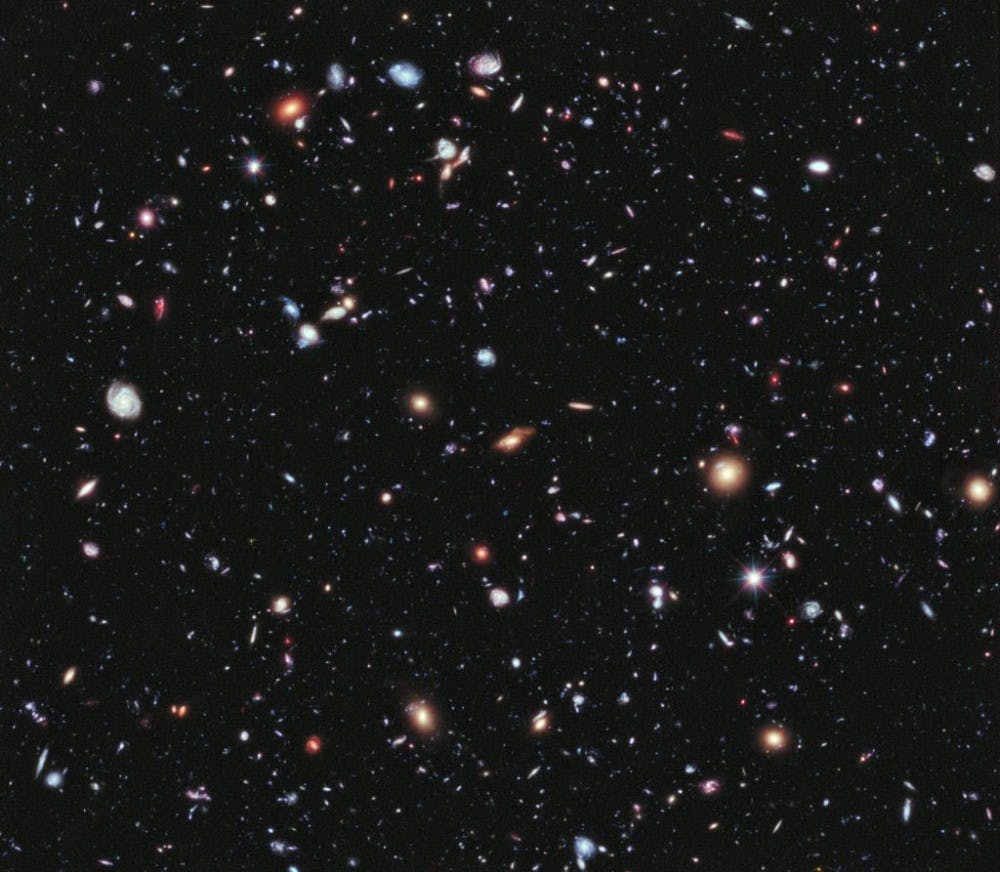Recent research conducted by an international team led by Christopher Conselice, an astrophysics professor at the University of Nottingham, found that the universe has about 2 trillion galaxies, which is 10 times more than previous estimates.
In the past two decades, scientists used images taken from the Hubble Space Telescope, one of the most productive and efficient instruments to date, to study the universe. Hubble Deep Field Imaging was used to estimate the number of galaxies in the observable universe. This estimation was based on the point where it is possible for light and other signals to reach an observer on Earth.
Deep field images are long-running images of a particular area in the sky that reveal faint objects by continuously collecting light from them. This allows for scientists to observe a galaxy that has a low natural brightness or far distance from the Earth.
Images used to approximate the number of galaxies in the observable universe are analyzed and the galaxies are directly counted. Extrapolating from the data collected by the Hubble Space Telescope, scientists in the past two decades estimated our universe contained around 200 billion galaxies.
Conselice’s work is the culmination of 15 years of research, which stemmed from the first galaxy-counting analysis. Conselice and his team from the Leiden Observatory and the University of Edinburgh approximated the number of galaxies in the universe by utilizing 3D modeling.
They took beam images from various deep field telescopes around the globe and created 3D maps that could be analyzed for the density and volume of the galaxies. By modeling these images, the scientists noticed that the observed densities of the galaxies were insufficient to account for the density of matter in the universe. This led to the conclusion that there are many more galaxies, and Conselice estimated the number to be around 2 trillion.
The researchers used the data to measure and analyze the number of galaxies that existed during the different epochs or different time periods of the universe’s existence. Conselice and his team found that there were significantly more galaxies in earlier epochs.
“This is very surprising as we know that, over the 13.7 billion years of cosmic evolution since the Big Bang, galaxies have been growing through star formation and mergers with other galaxies. Finding more galaxies in the past implies that significant evolution must have occurred to reduce their number through extensive merging of systems,” Conselice said according to the Royal Astronomical Society News & Press.
In their paper, which will be published in The Astrophysics Journal, the researchers developed a mathematical model on the decrease of number densities of galaxies over time. Furthermore, the team approximated a general merger time-scale and found that most of the merging galaxies are lower mass systems based on their number density increases over time.
The researchers confirm that their results are consistent with recent measures of cosmic infrared background light found in a 2015 study. According to Nature, astronomer Steven Finkelstein of the University of Texas at Austin stated that Conselice’s count was not surprising.
Current technology is limited to viewing only around 10 percent of the universe. Even with advanced mathematical modeling and improved telescope imaging, scientists have discovered only a tiny part of the universe. They can only extrapolate answers to fundamental astronomical questions such as the number of galaxies in the universe.
However, some of these questions may be answered in the near future. The James Webb Telescope, a space observatory that is currently under construction and scheduled to launch in October 2018, will be able to view extremely faint galaxies and hopefully expand our knowledge of the universe.
“It boggles the mind that over 90 percent of the galaxies in the universe have yet to be studied. Who knows what interesting properties we will find when we discover these galaxies with future generations of telescopes?” Conselice said in a press release.





